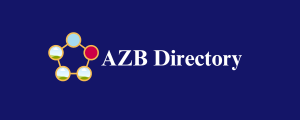Implementing effective wellness programs that motivate participants via phone number lists involves a strategic approach that combines communication, engagement, and personalization. Here’s a step-by-step guide to creating such programs: Define Program Objectives: Clearly outline the goals of your wellness program. Are you aiming to promote physical activity, healthy eating, stress reduction, or a combination of these? Define measurable objectives to track progress. Segmentation: Divide your participant list into relevant segments based on demographics, health goals, interests, and preferences. This allows you to tailor your messages to specific groups, increasing engagement. Engaging Content: Develop a content plan that includes a variety of engaging materials such as tips, articles, videos, infographics, and challenges related to wellness.
Keep the content concise
Informative, and visually appealing. Personalization: Use the participants’ names and relevant information to personalize Estonia Phone Number List your messages. Generic content can lead to disinterest, so tailoring messages to individual preferences enhances engagement. Behavioral Triggers: Incorporate behavioral triggers such as reminders, prompts, and nudges to encourage participants to take action. For example, send reminders to go for a walk, drink water, or practice mindfulness. Phone Communication: Use a mix of phone calls and text messages for communication. Phone calls can be used for more in-depth conversations, while text messages can deliver quick tips and reminders. Frequency and Timing: Determine the optimal frequency of communication.
Avoid overwhelming participants
With too many messages, but ensure you’re sending reminders and updates at appropriate times. Interactive Challenges: Implement AZB Directory interactive challenges that encourage participants to achieve wellness goals. These challenges could include steps challenges, healthy recipe contests, or stress-relief exercises. Incentives and Rewards: Offer rewards or incentives for achieving milestones. This could be anything from gift cards to recognition within the program. Rewards boost motivation and participation. Progress Tracking: Provide tools for participants to track their progress. This could be through a dedicated app, a website, or regular check-ins via phone calls. Two-Way Communication: Encourage participants to provide feedback, ask questions, and share their experiences. Create an avenue for them to communicate their needs and preferences.
Expert Support: Integrate access to health professionals or wellness coaches who can provide personalized advice and guidance. These experts can also offer more in-depth support for participants who require it. Data Analysis: Regularly analyze data to evaluate the effectiveness of your wellness program. Use this data to refine your strategies and tailor your communication based on participant engagement patterns. Continuous Improvement: Based on participant feedback and performance data, continuously refine and improve your program. Adapt to changing trends and participant needs. Compliance with Regulations: Ensure that your wellness program complies with data protection and privacy regulations, such as GDPR or HIPAA, especially when collecting and storing participant information. Remember, the key to a successful wellness program is creating a supportive and encouraging environment that helps participants make lasting positive changes in their lives. Using phone number lists as a communication tool can be effective, but it’s essential to combine this approach with thoughtful planning, engaging content, and a genuine commitment to your participants’ well-being.


